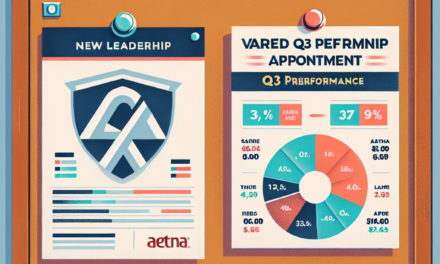Potential Job Losses: Medicaid and SNAP Cuts May Affect 1 Million by 2026
The landscape of social welfare programs in the United States is undergoing significant changes, with potential cuts to Medicaid and the Supplemental Nutrition Assistance Program (SNAP) projected to impact millions of Americans. As policymakers debate the future of these essential services, estimates suggest that up to 1 million jobs could be lost by 2026 as a direct consequence of these cuts. This article delves into the implications of these potential reductions, exploring the economic, social, and health-related ramifications for individuals and communities across the nation.
Understanding Medicaid and SNAP: A Brief Overview
Medicaid and SNAP are two critical programs designed to support low-income individuals and families in the United States. Understanding their structure and function is essential to grasp the potential impact of proposed cuts.
What is Medicaid?
Medicaid is a state and federally funded program that provides health coverage to eligible low-income individuals, including families, children, pregnant women, elderly individuals, and people with disabilities. Established in 1965, Medicaid has become a cornerstone of the American healthcare system, covering over 80 million people as of 2021.
- Eligibility: Medicaid eligibility varies by state, but generally, it is based on income, household size, and other factors. The Affordable Care Act (ACA) expanded Medicaid in many states, allowing more individuals to qualify.
- Benefits: Medicaid covers a wide range of services, including hospital visits, preventive care, mental health services, and long-term care.
- Economic Impact: Medicaid not only provides essential health services but also supports jobs in the healthcare sector, contributing significantly to state economies.
What is SNAP?
The Supplemental Nutrition Assistance Program (SNAP), formerly known as food stamps, is a federal program that provides nutritional assistance to low-income individuals and families. It aims to alleviate hunger and improve food security across the nation.
- Eligibility: SNAP eligibility is determined by income, household size, and expenses. The program serves millions of Americans, with over 42 million participants as of 2021.
- Benefits: SNAP benefits are provided through an Electronic Benefits Transfer (EBT) card, which can be used to purchase food at authorized retailers.
- Economic Impact: SNAP not only helps families afford food but also stimulates local economies by increasing demand for groceries and food-related services.
The Proposed Cuts: What’s on the Table?
As the federal government grapples with budgetary constraints, proposed cuts to Medicaid and SNAP have emerged as potential solutions. Understanding the specifics of these proposals is crucial for assessing their potential impact.
Medicaid Cuts
Proposed cuts to Medicaid often focus on reducing funding, altering eligibility requirements, or implementing work requirements for beneficiaries. These changes can have far-reaching consequences for millions of Americans.
- Funding Reductions: Many proposals suggest reducing federal funding for Medicaid, which could lead to states cutting services or limiting enrollment.
- Eligibility Changes: Altering eligibility criteria could disqualify many low-income individuals from receiving coverage, particularly those who are disabled or elderly.
- Work Requirements: Implementing work requirements could disproportionately affect vulnerable populations, including single parents and those with disabilities.
SNAP Cuts
Similar to Medicaid, proposed cuts to SNAP could involve reducing funding, tightening eligibility, or changing benefit structures. These changes could exacerbate food insecurity for millions of Americans.
- Funding Reductions: Cuts to SNAP funding could lead to reduced benefits for current recipients, making it more challenging for families to afford nutritious food.
- Eligibility Changes: Stricter eligibility requirements could disqualify many low-income families, particularly those with fluctuating incomes.
- Benefit Structure Changes: Altering how benefits are calculated could result in lower monthly allowances for families, further straining their budgets.
The Economic Ripple Effect of Cuts
The potential job losses resulting from cuts to Medicaid and SNAP extend beyond the immediate impact on beneficiaries. The economic ripple effect can be profound, affecting various sectors and communities.
Job Losses in the Healthcare Sector
Medicaid cuts could lead to significant job losses in the healthcare sector, which relies heavily on funding from the program. Hospitals, clinics, and long-term care facilities may face financial strain, leading to layoffs and reduced hiring.
- Hospital Closures: Many rural hospitals depend on Medicaid funding to operate. Cuts could lead to closures, resulting in job losses for healthcare workers and reduced access to care for communities.
- Reduced Services: Healthcare facilities may be forced to cut services or staff, impacting patient care and employment opportunities.
- Impact on Health Professionals: Job losses among nurses, doctors, and support staff could lead to a shortage of healthcare professionals, further straining the system.
Impact on Food Retail and Agriculture
SNAP cuts could also have a significant impact on the food retail and agricultural sectors. Reduced benefits mean less spending power for families, which can lead to decreased sales for grocery stores and farmers.
- Decreased Sales: Grocery stores that rely on SNAP purchases may see a decline in sales, leading to potential layoffs and reduced hours for employees.
- Agricultural Impact: Farmers may experience decreased demand for their products, affecting their income and employment levels in the agricultural sector.
- Supply Chain Disruptions: A decline in food purchases can disrupt supply chains, affecting distributors and logistics companies.
Social Implications of Medicaid and SNAP Cuts
The social implications of cuts to Medicaid and SNAP are profound, affecting not only individuals but also families and communities. The potential for increased poverty and food insecurity raises significant concerns.
Increased Poverty Rates
Reducing access to Medicaid and SNAP can lead to increased poverty rates, particularly among vulnerable populations. Families that rely on these programs may find themselves unable to meet basic needs.
- Impact on Children: Children are particularly vulnerable to the effects of poverty, which can lead to long-term consequences for their health and education.
- Health Consequences: Lack of access to healthcare can exacerbate existing health issues, leading to a cycle of poverty and poor health outcomes.
- Community Strain: Increased poverty can strain community resources, leading to higher demand for social services and support programs.
Food Insecurity and Health Outcomes
SNAP cuts can lead to increased food insecurity, which has direct implications for health outcomes. Access to nutritious food is essential for maintaining health and preventing chronic diseases.
- Malnutrition: Reduced access to food can lead to malnutrition, particularly among children and the elderly, who are more susceptible to health issues.
- Chronic Diseases: Food insecurity is linked to higher rates of chronic diseases such as diabetes and heart disease, which can strain healthcare systems further.
- Mental Health Impacts: The stress of food insecurity can lead to mental health issues, including anxiety and depression, affecting overall well-being.
Case Studies: Real-World Impacts of Cuts
Examining case studies can provide valuable insights into the real-world impacts of Medicaid and SNAP cuts. These examples illustrate the potential consequences for individuals and communities.
Case Study 1: The Impact of Medicaid Expansion Repeal in Arkansas
In Arkansas, the repeal of Medicaid expansion led to significant consequences for low-income residents. The state saw a rise in uninsured rates and a decline in access to healthcare services.
- Increased Uninsured Rates: Following the repeal, the uninsured rate among low-income individuals rose sharply, leading to increased emergency room visits and delayed care.
- Job Losses in Healthcare: Hospitals reported layoffs and reduced hiring due to decreased Medicaid funding, impacting local economies.
- Health Outcomes: Many individuals faced worsening health conditions due to lack of access to preventive care and treatment.
Case Study 2: SNAP Cuts in the 2014 Farm Bill
The 2014 Farm Bill included significant cuts to SNAP, resulting in reduced benefits for millions of Americans. The impacts were felt across various sectors.
- Increased Food Insecurity: Many families reported difficulty affording food, leading to increased reliance on food banks and community resources.
- Economic Impact: Grocery stores in low-income areas experienced decreased sales, leading to layoffs and reduced hours for employees.
- Health Consequences: The cuts were linked to increased rates of malnutrition and chronic diseases among affected populations.
Conclusion: The Path Forward
The potential cuts to Medicaid and SNAP pose significant risks to millions of Americans, with estimates suggesting that up to 1 million jobs could be lost by 2026. The economic, social, and health-related implications of these cuts are profound, affecting not only individuals but also families and communities at large.
As policymakers consider the future of these essential programs, it is crucial to weigh the potential consequences carefully. Protecting access to Medicaid and SNAP is not just a matter of social justice; it is also an economic imperative that supports jobs, health, and well-being across the nation.
In summary, the proposed cuts to Medicaid and SNAP could lead to increased poverty, food insecurity, and job losses, with far-reaching consequences for individuals and communities. It is essential for stakeholders to advocate for the protection of these vital programs to ensure a healthier and more equitable future for all Americans.





